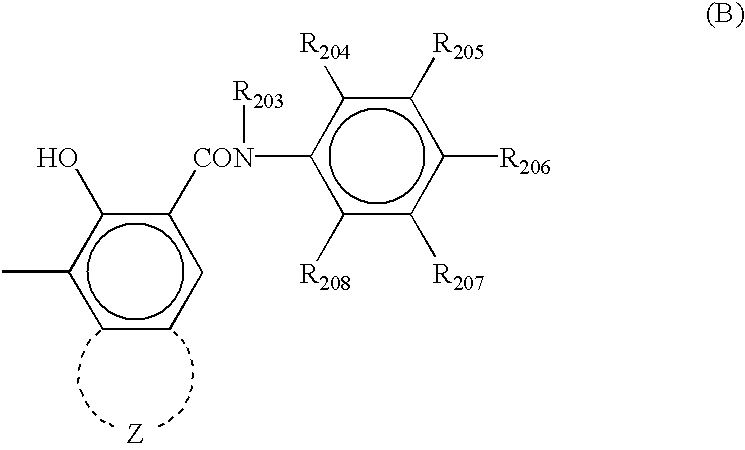Image formation apparatus using a dry two-component developer for development
a technology of two components and development apparatus, which is applied in the field of apparatus and methods for developing using a dry two-component developer, can solve the problems of easy wear and tear of the photo conductor, difficulty in having a long service life, and insufficient developer on the supporter of the developer
- Summary
- Abstract
- Description
- Claims
- Application Information
AI Technical Summary
Benefits of technology
Problems solved by technology
Method used
Image
Examples
example no.19
EXAMPLE NO. 19
The charger of the copying machine used in example 2 was modified and adapted to the charged roller described below as an alternative to the contact charged roller and 30000 copies were continuously produced similar to example 2. Additive voltage was only a DC component similar to example 2.
A closely arranged charged roller was formed by wrapping teflon tape having a thickness of 100 .mu.m around areas (which are not image formation areas) of 0 to 5 mm measured from both edges of the charged roller used in example 2.
example no.20
EXAMPLE NO. 20
Continuous copying was carried out similar to example 19, except that the charging condition of example 19 was changed as follows.
The electric potential at an unexposed area: -800V -1.5V measured as peak to peak was applied as an AC component.
As described above, after 30000 copies were continuously produced in example 2, 18-20 half tone images were outputted under high temperature and high humidity (30.degree. C., 90% RH) and the images were evaluated. The result of the evaluation is shown in table 2.
Although all of the trouble points in examples 2, 18, and 19 were not a troublesome level for actual use, the condition in example 20 was best.
example no.21
EXAMPLE NO. 21
50000 copies were continuously produced in the condition of example 2.
PUM
 Login to View More
Login to View More Abstract
Description
Claims
Application Information
 Login to View More
Login to View More - R&D
- Intellectual Property
- Life Sciences
- Materials
- Tech Scout
- Unparalleled Data Quality
- Higher Quality Content
- 60% Fewer Hallucinations
Browse by: Latest US Patents, China's latest patents, Technical Efficacy Thesaurus, Application Domain, Technology Topic, Popular Technical Reports.
© 2025 PatSnap. All rights reserved.Legal|Privacy policy|Modern Slavery Act Transparency Statement|Sitemap|About US| Contact US: help@patsnap.com



